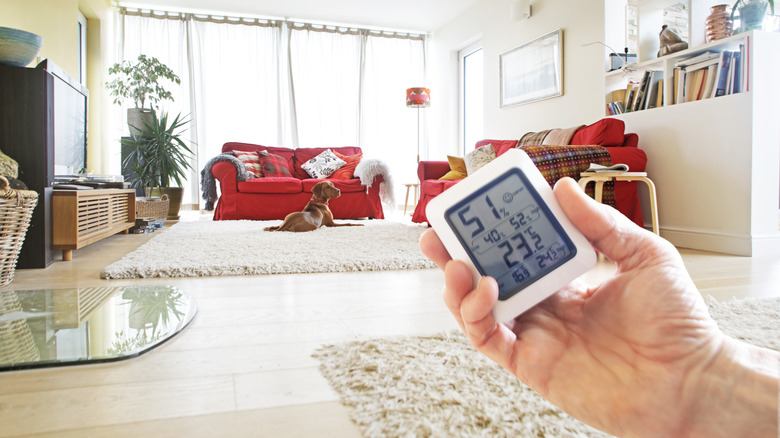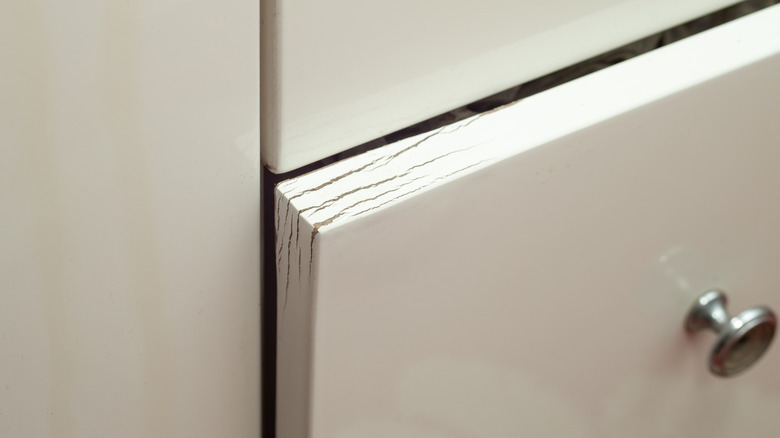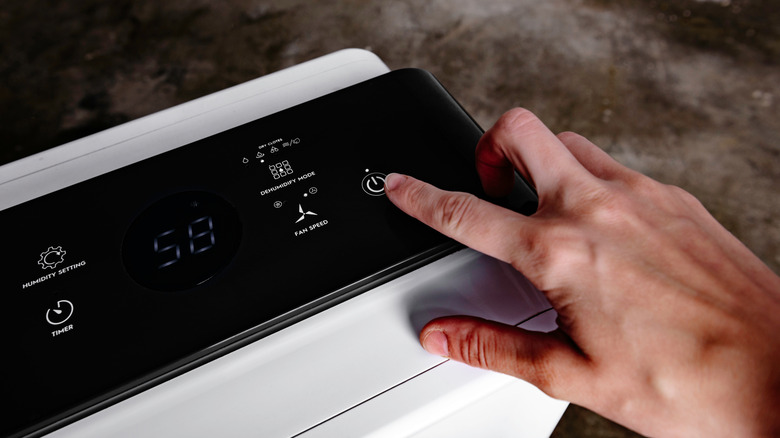What Happens If Your Home Doesn't Have A Consistent Humidity Level?
If you are experiencing frizzy hair or a dry throat upon stepping outside, it may be due to the humidity being overly high or low. High humidity levels can impact air quality and create a higher heat index, making just being outdoors uncomfortable. Unfortunately, when you try to retreat inside, you may find that you're still facing a similar issue. Humidity affects you, and houses also react to humidity. Changes in indoor humidity can be tied to changes in outdoor weather. Warm air can hold more water than cold air, so in the winter, the air tends to be drier, while in the summer, the air can contain more moisture. Along with changes based on outdoor temperatures and humidity, indoor humidity may also change due to moisture from activities like showering and cooking. An ineffective HVAC system that does not allow for proper ventilation can also impact indoor moisture levels. These fluctuations can make the humidity level in your home either higher or lower than what is comfortable and safe.
The suggested humidity level for inside a home is between 40% and 60%, but under 50% is recommended to discourage mold growth. The ideal in-home humidity level also changes based on the outside air temperature, dropping from 50% down to as low as 15% in extremely cold conditions. Deviations from the ideal indoor humidity levels can cause concerning issues in your home, such as bubbling and peeling paint or warping wood furniture, door frames, and cabinetry. Even worse, humidity can also affect your home's structure by impacting the foundation and floors.
How worried should you be about fluctuating humidity levels?
When the air around wood has more or less moisture than the wood itself, the wood will absorb or release moisture to try to reach an equilibrium. Wood absorbs moisture and grows, and it releases moisture and shrinks. The stress of adapting to the change can permanently damage wood, as can rot due to excessive moisture. Warping, cracking, and rot will weaken the structure of your home, increasing the possibility of a collapse. While you can try some easy ways to restore a warped door and other damaged wood structures, it is more complicated to fix some building structure damage. Corrosion of metal components in your home is also a risk with high humidity.
Paint can also be damaged by high humidity as water becomes trapped under the paint. This appears as unsightly blistering because the water prevents the paint from properly sticking to the wall. You can remove the paint and repaint, but if you do so without first dehumidifying the room, you will face the same blistering. In drywall, along with other areas of your home, you might get mold. Excessive moisture, especially without proper ventilation, can allow mold and mildew to grow. This can result in eye, nose, throat, and skin irritation, among other, more severe health consequences. If you experience mold in your home, you will need to throw away all porous and absorbent items, including carpeting, and thoroughly clean all nonporous items. You also need to fix the humidity as quickly as possible, and if the mold is widespread, you will likely need to hire a mold removal professional.
How to protect your home from changing humidity levels
Warped and rotted wood, ruined paint, mold, and overall structural damage all sound like serious or expensive problems, and they certainly can be. Luckily, they can be prevented with a few different indoor humidity control solutions. Using tools, like a hygrometer or a smart thermometer, to check if the humidity levels in your home are good helps you keep an eye on fluctuations and adapt your use of dehumidifiers or humidifiers. If the humidity is above the 40% to 60% sweet spot, consider using a dehumidifier. If you have the budget, you can install one device to efficiently dehumidify your whole house: the appropriately named whole-house humidifier. Alternatively, you can explore portable compressors and desiccant humidifiers that lower humidity in smaller areas. Dehumidifiers should run for 12 hours per day to meet the ideal indoor humidity levels.
When the humidity is low, you can turn on a humidifier to add moisture back into the air. Humidifiers can also help you with dry skin and allergies, providing benefits for both you and your house. Clean the humidifier regularly, and don't leave water in the tank when it's not in use to prevent mold and mildew. Humidifiers should run for about four to eight hours to meet ideal indoor humidity levels.
If you are experiencing issues with indoor humidity levels, check your home for poor ventilation, leaks, HVAC system problems, and gaps that let in air from outside. Fixing any of these potential issues can help you better control your home's humidity and prevent issues caused by incorrect humidity levels.


